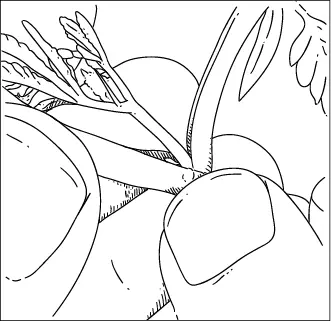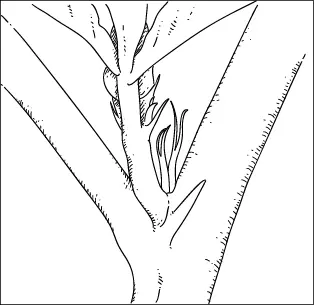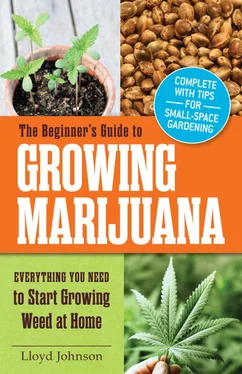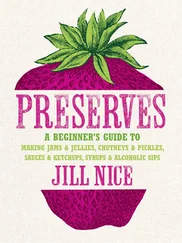With any soil amendments, always read labels, especially dilution instructions. Just because something is organic does not mean it will not harm a plant if used in excess.
That being said, most unimproved soils are not ready for prime time; any efforts you make toward creating a near to perfect soil environment will always be rewarded by the ever-obliging cannabis plant. Eventually, as this sort of problem solving becomes familiar to you as a gardener, you will find it exciting to build soil and will evolve your own “perfect” soil mix that is directly suited to your microclimate and your plant strains.
There are many advantages to breeding your own strains of cannabis and propagating by seed. Cannabis is a very complex plant, and different strains have different benefits for each individual who uses them. You will discover that some strains are what you are looking for, while others are not worth your trouble. Breeding for a certain level of psychoactivity, muscle relaxation, or aroma will allow you to customize your strains for your optimum benefit, in both palatability and effects. Once you have created a strain that pleases you, you can preserve the identical genetics by cloning or asexual propagation.
Propagation of Fixed Hybrids (How to Breed for Seed)
Cannabis produces both male and female plants, with an occasional hermaphrodite thrown in. Ideally the breeder has both parents for observation and can assess for desirable traits to be passed on to the offspring. These include:
• Vigor
• Yield and size
• Hardiness
• Disease resistance
And, specifically:
• Cannabinoid expression
• Taste
• Aroma
• Pain relief
Additionally, ease of manicuring, typical rates of maturation, and color are all of interest to a seed breeder and some of many traits that can be fixed by line breeding.
Here again, the importance of good recordkeeping is imperative; only a few parent individuals will approach the ideal. If your strain wanders from the direction you are trying to take it, you can review the characteristics of the hybrid generations that came before and breed back into the strain for improved performance.
Inbreeding by selecting and crossing individuals that are close to the ideal can produce strains that are fairly close to uniform in six to seven generations. Inbreeding also produces recessive or less than desirable traits in some individuals. These should be removed from the breeding program and not propagated. If inbreeding reduces vigor, the breeder goes back a few generations (another advantage of seed) and back-crosses, or, alternatively, the breeder can introduce another desirable strain into the line.
Accidental pollination will not improve the strain and may even lower or degenerate the strain by random selection of undesirable traits. So whether you are growing inside or outdoors, you must be in control of the pollination process.
Money Smart
Breeding your own plants for seeds, or taking cuttings from a healthy female plant, will save you the cost of purchasing seeds or clones from a vendor. Propagation takes some effort, but it’s the most economical means of maintaining your crop.
Segregation of Male and Female Plants
Your initial little seedlings will be just that, seedlings, with no sexual differentiation at all (unless you’ve acquired and planted feminized seeds). Your main concern is to provide them with light, water, and plenty of food for strong roots and healthy vegetative growth. At this point, all your seedlings can stay together, although you want to think through how many males you want and where to put them. They will have to be moved quickly once they provide proof of their sexual determination, or declare .
The male and female cannabis plants have different flowers that develop from a tiny nub known as the primordia , located initially on the main stems. Flowering is triggered by a change in light. This happens naturally outdoors as days grow shorter in the fall. Indoor growers can speed their crop cycles by manipulating the amount of light their plants receive. As a general rule (though genotype may cause some variation), reducing the light period, or photoperiod, to twelve hours—from eighteen or even twenty-four—will trigger flowering.
The best place to check for flowering is at the top of the plant at the nodes (or intersections) where the plant develops a small leaf spur. The initial primordia will appear behind this spur and will start out looking like a tiny rounded pod.

Site for checking primordial for sexing plants. This is the “initial” nub.
Eventually the primordia either elongates into a tubular-looking female calyx or the more rounded nubbin of the developing male flower. The final proof of sex is the two white hairs or pistils that will appear from the end of the female calyx. These pistils can also appear pinkish or yellowish. It’s important to correctly distinguish each plant’s sex, so use your jeweler’s loupe or magnifying glass to examine the primordia.

Early female declaration. Note the “hairs” that have come out of the elongated nub.

Early female flower beginning development.
Once your plants have declared, you must remove the males at once. Ideally, you will have already decided which males to keep for breeding, perhaps even just one.
The males can stay in smaller containers, do not need feeding for vegetative growth, and barely need watering. All you want is the pollen, and a tiny (relative to how big the females are going to get) male can produce more than enough for breeding purposes.
Because all you want from the males is their pollen, space is not as much of an issue as it is with the females that you want to grow big and yieldy. Make certain the males will be indoors where they can be severely segregated; absolutely no random pollen transfer should be possible.
When and How to Collect Pollen
The male flowers develop into long hanging clusters of little pods full of pollen and are very pretty to look at. At this point, the male(s) should have been isolated in an area that is easy to seal off, has light, and is not somewhere the household needs to access. Bear in mind, once they start flowering and shedding yellow pollen, you can become a conduit by carrying pollen on your clothing or hands. Keep contact and handling to a minimum, and change your clothing before visiting the females.
As soon as the male has started the actual release of its bright yellow pollen, cut some branches with good pollen clusters that appear ripe and ready to go. These can stand in tall vases of water set on clean glass or a large mirror. The rest of the plant can be terminated and double-bagged for later disposal. If you are using males from different strains, make sure to thoroughly clean your tools and hands in between collecting their pollen to avoid cross-contamination.

Cutting male flowers for pollen collection. Note the extreme difference in the early female and the male flowers.
Читать дальше
















